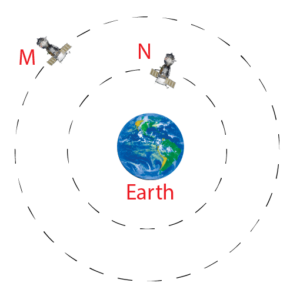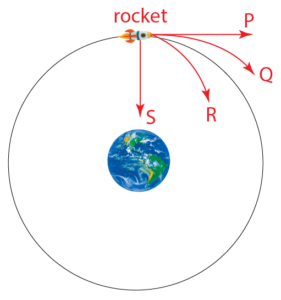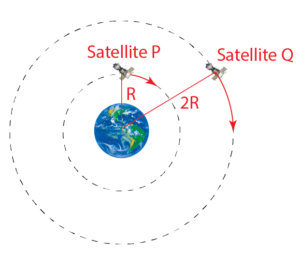!3.3.1 Man Made Satellite
Quiz Summary
0 of 10 Questions completed
Questions:
Information
You have already completed the quiz before. Hence you can not start it again.
Quiz is loading…
You must sign in or sign up to start the quiz.
You must first complete the following:
Results
Results
0 of 10 Questions answered correctly
Your time:
Time has elapsed
You have reached 0 of 0 point(s), (0)
Earned Point(s): 0 of 0, (0)
0 Essay(s) Pending (Possible Point(s): 0)
Categories
- Not categorized 0%
| Pos. | Name | Entered on | Points | Result |
|---|---|---|---|---|
| Table is loading | ||||
| No data available | ||||
- 1
- 2
- 3
- 4
- 5
- 6
- 7
- 8
- 9
- 10
- Current
- Review
- Answered
- Correct
- Incorrect
-
Question 1 of 10
1. Question
1 point(s)If r represents the radius of a satellite’s circular orbit around a planet of mass M, the velocity of the satellite is given by…
CorrectIncorrect -
Question 2 of 10
2. Question
1 point(s)
Based on the diagram above, which comparison is true for the satellites M and N in different orbits around the Earth?
CorrectIncorrect -
Question 3 of 10
3. Question
1 point(s)A satellite remains in its orbit around the Earth due to…
CorrectIncorrect -
Question 4 of 10
4. Question
1 point(s)Which statements are true about geostationary satellites?
CorrectIncorrect -
Question 5 of 10
5. Question
1 point(s)There is a satellite always visible at the same place on Earth throughout the year. How much time does it take for the satellite to complete an orbit?
CorrectIncorrect -
Question 6 of 10
6. Question
1 point(s)
The diagram shows a rocket launched from a point O at an altitude from the surface of the Earth with a horizontal velocity u. With this velocity, the rocket can move around the Earth in a circular orbit. If the rocket launches with a velocity of 3/4 u, which trajectory will the rocket follow?
CorrectIncorrect -
Question 7 of 10
7. Question
1 point(s)A man-made satellite orbits the Earth at a height of 1620km. What is the linear speed of the satellite? [Mass of the Earth = 5.97×10²⁴ kg, radius of the Earth = 6.37×10⁶ m, G = 6.67×10⁻¹¹ Nm² kg⁻²]
CorrectIncorrect -
Question 8 of 10
8. Question
1 point(s) In the diagram above, given the orbital velocity of satellite P is v, what is the orbital velocity of satellite Q in terms of v?CorrectIncorrect
In the diagram above, given the orbital velocity of satellite P is v, what is the orbital velocity of satellite Q in terms of v?CorrectIncorrect -
Question 9 of 10
9. Question
1 point(s)Which statement about a geostationary satellite is true?
CorrectIncorrect -
Question 10 of 10
10. Question
1 point(s)What defines geostationary satellites?
CorrectIncorrect